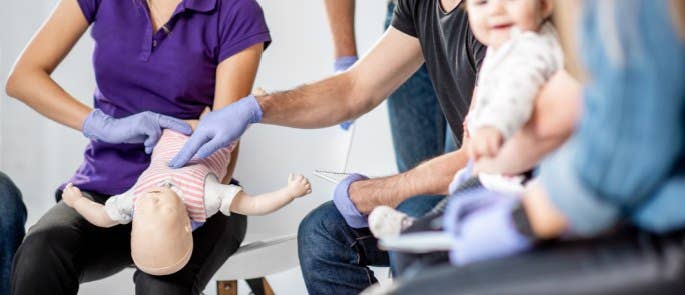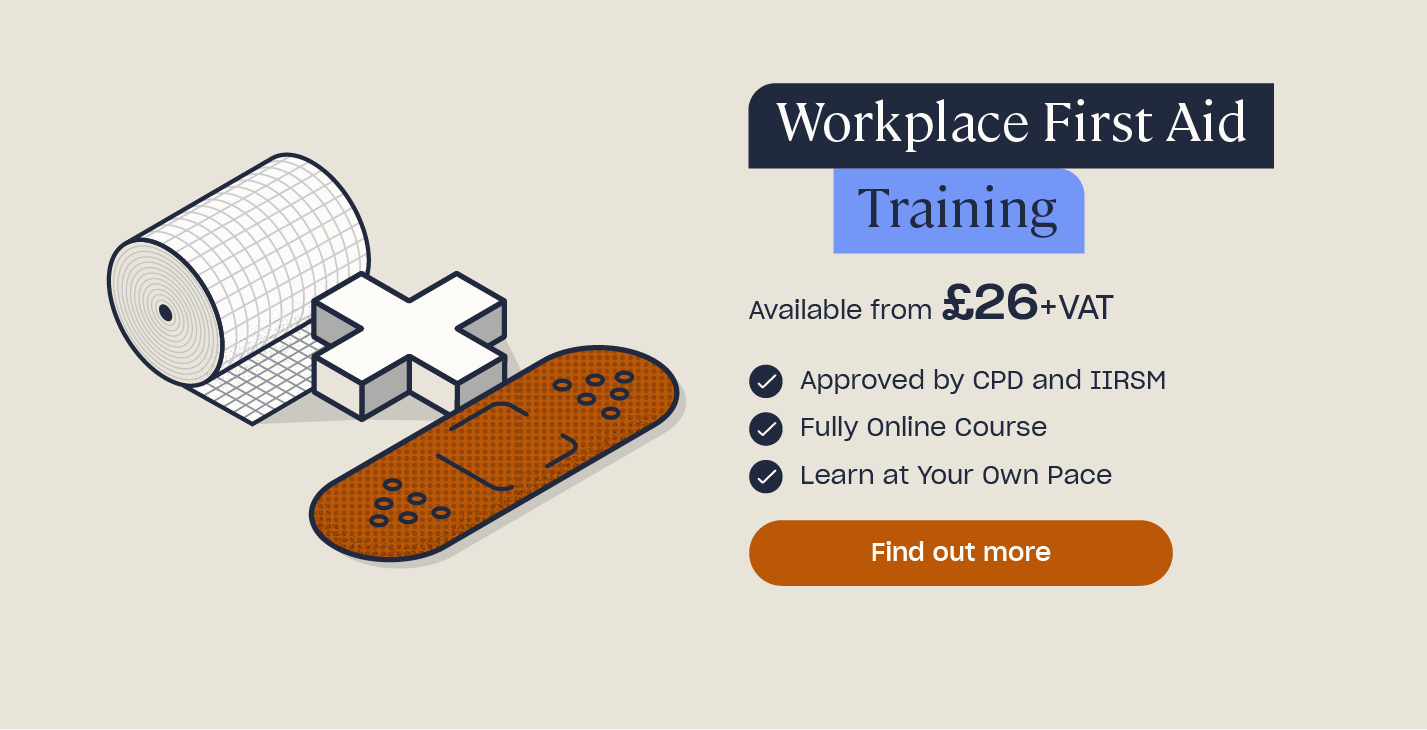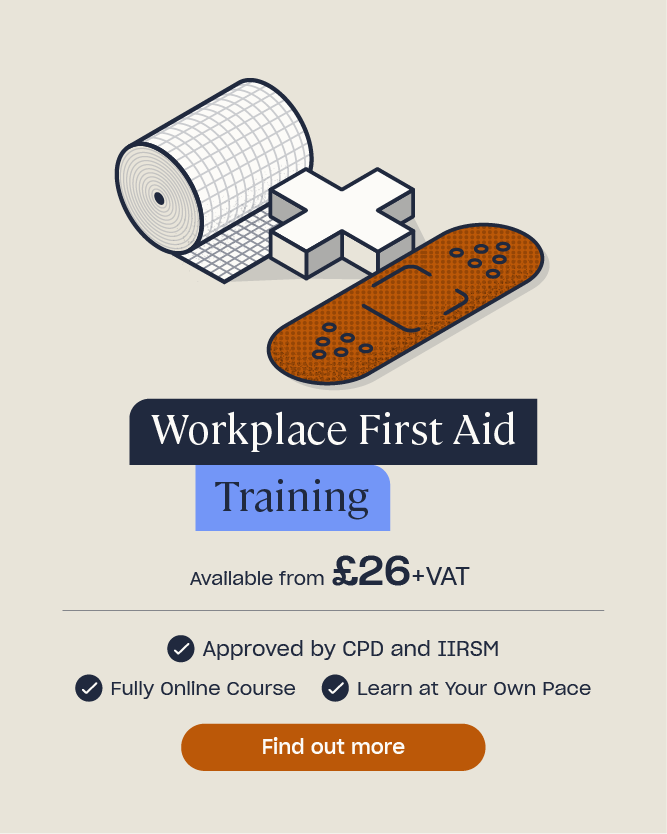Guidance on What To Do If Someone Is Choking
Choking can happen to anyone at any time. Regardless of whether you work in a role that requires you to understand how to recognise and respond to a choking incident, having even a basic understanding of how to act in such circumstances can be beneficial to everybody.
This article will discuss how to recognise the signs that someone is choking, as well as the different types and causes. We will look at how to respond to both mild and severe incidents of choking and the variations in approach and technique when responding to infants, children and adults.
Want to learn how to save a life?
Our Basic Life Support Training is designed to give you the knowledge and understanding required to react quickly and appropriately in emergency situations. Or, look to increase your first aid awareness with our essential Workplace First Aid Training, useful for everyone in every workplace and every home.
Signs of Choking
The universal sign that indicates this is happening is when a person clutches at their throat. It is important to recognise the signs of choking so action can be taken quickly. The NHS describes choking as occurring when a person’s airway suddenly becomes fully or partly blocked, rendering them unable to breathe.
Some of the more common signs a person is choking include:
- Coughing or gagging.
- Watery eyes.
- An inability to talk properly or at normal volume.
- Having a red, puffy face.
- Wheezing or abnormal breathing sounds.
- Signs of distress, such as throat clutching or panicked hand gestures.
- A blue colouring to their lips or skin.
- Passing out.
Causes of choking
It is likely many of us will have experienced a mild episode of choking at some point in our lives, perhaps a crisp got stuck in your throat or your drink felt like it went down the wrong way. Our instinctive reaction in such situations is to cough, which is usually sufficient to rectify the situation.
Certain people may be more at risk of choking on their food and drink, those with dysphagia (difficulty swallowing) for example. Dysphagia can occur following a stroke or even as a result of old age. If you work in a role that sees you caring for those at greater risk of choking, you have a Duty of Care to keep those you support free from risk of harm. To avoid the risk of choking, control measures such as thickened fluids and a soft food diet may be required.
Some of the more common causes of choking include:
- Eating or drinking too quickly.
- Not properly chewing large pieces of food before swallowing.
- Wearing poorly fitting dentures.
- Distractions whilst eating and drinking, such as laughing or moving around.
- Choking on one’s own vomit – particularly after drinking large amounts of alcohol.
- Foreign objects causing an obstruction – a common cause in younger children as they often explore the world around them by putting things in their mouths.
The Office of National Statistics’ latest Choking related deaths in England and Wales report shows that the elderly are the most likely to suffer fatal choking incidents, with more occurrences taking place in hospitals than in their own home. This may be because those over 65 are more prone to conditions leading to dysphagia, having poorly fitting dentures, a reduction in saliva, are left unattended with food or are fed too quickly by care staff.
Choking can be a life-threatening, and therefore time-sensitive emergency, making the need for quick reactions and an effective response incredibly important. When a person can no longer take in oxygen, the brain and other vital organs become oxygen starved and the body goes into respiratory arrest. The more time that passes, the more irreparable damage is done. If respiratory arrest is not treated, it will ultimately lead to a cardiac arrest.
Taking a First Aid course is an excellent way to gain the knowledge required to respond to a person who is choking, and increase confidence when it comes to handling emergency situations.

Types of Choking
There are two main types of choking. One is known as a partial airway obstruction or mild choking, and the other is a complete airway obstruction, or severe choking. It is important to be able to identify what kind of airway obstruction a person is suffering with, as this will inform the kind of assistance that is required.
How to Identify the Type of Choking
If someone has a partial airway obstruction:
- They should be able to breathe.
- Their breathing may sound different as air passes through a narrower space.
- They should be able to cough.
- They should be able to cry.
- They will usually be able to clear the blockage themselves.
If someone has a complete airway obstruction:
- They will be unable to breathe.
- They will be unable to cough.
- They will be unable to cry.
- They will require help, without it they will lose consciousness.
How to Help Someone Choking
Once you have identified the type of airway obstruction a person has, you can respond accordingly. If they have a partial obstruction, you should, in the first instance, encourage them to cough to try and clear the blockage and ask them to spit out any item in their mouth. Do not put your fingers into their mouth as they may bite or you may push an obstruction further down the throat. If these steps do not work, you should perform back blows.
If someone is suffering a complete obstruction, you should begin with five back blows, also referred to as back slaps. If these do not successfully clear the obstruction, you should move onto administering five abdominal thrusts. Abdominal thrusts should not be given to children under one year of age or pregnant women. If neither back blows or abdominal thrusts clear the obstruction, call 999 or 112 immediately.

In the first instance with a young child, if they are already coughing with sound, encourage them to carry on. If this is unsuccessful you should look for an obstruction. If you can see it, carefully try and remove it, but be careful not to push the object further into their throat. If this does not work, move on to age appropriate back blows. If this still does not work, give infants under one year of age chest thrusts and children over one year abdominal thrusts. Do not leave a child alone at any point.
If a casualty of any age becomes unconscious, lay them on a hard, flat surface and call the emergency services immediately. Place the call on loudspeaker so you have both hands free and follow the advice given by the emergency services operator. They will likely require you to perform cardiopulmonary resuscitation (CPR).
How to Administer Back Blows
To perform back blows on adults or children over one year of age, you should:
- Stand behind them, slightly to the side. Hold out your forearm and lean them forward so you are supporting their chest.
- Lay a small child over the age of one face down on your lap to perform back blows.
- Use the heel of your free hand to give a maximum of five sharp back blows, between their shoulder blades. The heel is the part of your hand between the palm and your wrist.
- Check to see if the obstruction has cleared.
- Move on to five abdominal thrusts if it has not cleared.
To perform back blows on an infant under one year of age, you should:
- Lay the infant face down along either your thigh or your forearm. Supporting their head with your hand.
- Use the heel of your free hand, give up to five sharp back blows in the middle of the back between the shoulder blades.
- Check their mouth for any visible obstruction following the back blows and carefully remove it with the thumb and index finger.
- Move onto chest thrusts (for infants under one year of age) if the obstruction has not cleared.

How to Administer Chest Thrusts
Chest thrusts should be performed on infants under one year of age if the obstruction has not been cleared by using back blows.
To perform chest thrusts, you should:
- Lay the infant face up along the length of your thighs.
- Locate the breastbone and place two fingers in the centre.
- Administer five sharp chest thrusts/pushes.
- The chest should be compressed to about a third of its depth.
How to Administer the Abdominal Thrust Procedure (Heimlich Manoeuvre)
To administer abdominal thrusts to adults and children over one year of age, you should:
- Stand behind them and put your arms around their waist, bending them forward.
- Kneel behind them instead of standing if you are performing this on a smaller child.
- Make a fist with one hand and place it just above their belly button.
- Take your other hand and grab your fist, then pull sharply inwards and upwards five times.
- Check if the obstruction has dislodged.
- Call 999 or 112 for help immediately if the obstruction is still blocked, and follow the operator’s advice.
If the cycle of back blows and abdominal thrusts or chest thrusts does not clear the obstruction, call for help regardless of whether they are still conscious. Continue the cycle until help arrives and always follow the advice given by the emergency services. If a person is unable to stand, for example if they are confined to a wheelchair, then back blows and abdominal thrusts should be given from the side.
Feel free to download our free infographic below, as a reminder of the steps required to give back blows and abdominal thrusts to a choking adult.
Choking After Effects
If someone has suffered a choking episode it is generally advisable to get checked out by a doctor following the event as there are certain complications that can arise as a consequence. It is useful to be aware of some of the after effects that can occur.

Some of the after effects following choking, can include:
- Damage to the delicate lining of the airways due to the object that caused the obstruction. Swelling can occur over time.
- Aspiration pneumonia – this is inflammation or infection of the lungs caused by food or liquids being inhaled into the lungs.
- Psychological effects – choking can be very scary, and the casualty or responder may be left with some anxieties or post traumatic stress following the event.
- The physical impact of back blows, abdominal thrusts or even CPR, can lead to bruising or injury to the ribs.
How to Prevent Choking
When looking at ways to prevent choking, always look at the most common causes and consider ways you could control their associated risk. For example, as young children are prone to choking on small foreign objects, such as pieces of Lego, marbles etc, always try to keep toys age appropriate and keep small items out of reach.
Other ways to help prevent choking include:
- Cutting food into small pieces, particularly for children and adults with an increased risk of choking.
- Avoid certain foods that make choking more likely, such as whole grapes.
- Encouraging food to be chewed slowly and thoroughly.
- Not encouraging laughter or talking whilst someone is eating.
- Slowing down the speed you assist someone to eat and consider how much food you give at once.
- Ensuring food has been swallowed before feeding another mouthful.
- Changing food textures to a softer diet or adding thickener to fluids.
- Avoiding excessive intake of alcohol before and during meals.
- Not eating or drinking unless sat in an upright position.
It is important not to leave those at increased risk of choking unsupervised at meal times. Being present not only allows you to act fast should a choking incident occur, but also helps prevent situations of food sharing. Older siblings or others sharing their dining space may not realise the dangers certain foods can pose to those more likely to choke.

Some common foods that can increase the likelihood of choking are:
- Firm round foods like whole grapes.
- Very dry foods such as crackers and rice cakes.
- Popcorn.
- Hard boiled sweets.
- Stringy foods such as celery.
- White bread as it can expand and block the airway, especially if water is taken in also.
- Meat with bones.
It is important to remember that choking can happen to anyone and at any time or place. It is good practice for everyone to have a basic knowledge of how to prevent, recognise and respond to choking incidents as it could save someone’s life.
Further Resources:
- Workplace First Aid Training Course
- Basic Life Support Training Course
- How to Carry Out the Primary Survey Using the DRABC Steps
- How to Administer CPR







